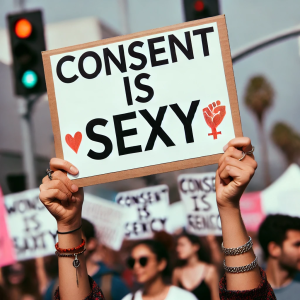Sexual norms have undergone significant transformations throughout history, influenced by cultural, social, and political changes. Understanding the evolution of sexual norms helps us appreciate the diversity and complexity of human sexuality today. This comprehensive guide explores the shifting views on sexuality, the factors driving these changes, and the impact on society.

Contents
Historical Perspective on Sexual Norms
Sexual norms have varied greatly across different cultures and historical periods. In many ancient civilizations, sexuality was openly expressed and celebrated. For example, in ancient Greece, same-sex relationships were common and accepted. In contrast, during the medieval period in Europe, the Christian Church’s influence led to more restrictive views on sexuality, emphasizing chastity and condemning non-heteronormative behaviors.
Key Historical Milestones:
- Ancient Civilizations: Sexuality was often integrated into religious and cultural practices. Temples dedicated to fertility gods and goddesses were common.
- Medieval Period: The Church’s dominance imposed strict sexual norms, associating sex primarily with procreation and viewing non-heteronormative acts as sinful.
- Renaissance and Enlightenment: These periods saw a gradual loosening of sexual restrictions, with increased interest in humanism and individual expression.
- Victorian Era: A period of strict moral codes and repression, emphasizing modesty and sexual restraint, particularly for women.
- 20th Century: Marked by significant shifts, including the sexual revolution of the 1960s, which challenged traditional norms and advocated for sexual liberation.

The Sexual Revolution

The 1960s and 1970s brought about profound changes in sexual norms, often referred to as the sexual revolution. This period was characterized by a significant shift towards sexual freedom and liberation, challenging previously held beliefs about sex and relationships.
Key Factors of the Sexual Revolution:
- Birth Control: The invention and widespread use of the birth control pill allowed women to have greater control over their reproductive health and sexual choices.
- Feminism: The feminist movement advocated for women’s rights, including sexual autonomy and equality in relationships.
- LGBTQ+ Rights: Increased visibility and activism by the LGBTQ+ community challenged heteronormative standards and fought for equal rights.
- Cultural Shifts: Media, music, and literature began to reflect and promote more liberal attitudes towards sex.

Modern Views on Sexuality

In recent decades, sexual norms have continued to evolve, driven by ongoing social, cultural, and technological changes. Today, there is a greater acceptance and recognition of diverse sexual identities and behaviors.
Key Trends in Modern Sexuality:
- LGBTQ+ Acceptance: There is increased acceptance and legal recognition of LGBTQ+ individuals and relationships. Same-sex marriage is legal in many countries, and there is greater visibility of LGBTQ+ people in media and public life.
- Gender Fluidity: Traditional binary views of gender are being challenged, with more people identifying as non-binary, genderqueer, or gender-fluid.
- Sex Positivity: A growing movement that promotes healthy and consensual sexual expression, emphasizing the importance of consent, communication, and respect.
- Technology and Sexuality: The internet and social media have transformed how people meet, interact, and express their sexuality. Online dating, virtual relationships, and digital sexual communities are now commonplace.

Factors Driving the Evolution of Sexual Norms

Several factors contribute to the ongoing evolution of sexual norms:
- Education: Comprehensive sex education promotes informed and healthy attitudes towards sex and relationships. It challenges myths and stigmas, fostering a more open dialogue about sexuality.
- Media Representation: Positive and diverse representation of different sexual identities and behaviors in media helps normalize and validate varied sexual experiences.
- Legal Changes: Legal recognition and protection of sexual rights, such as the legalization of same-sex marriage, contribute to societal acceptance and equality.
- Activism: Advocacy and activism by marginalized communities play a crucial role in challenging oppressive norms and promoting inclusivity and acceptance.
- Psychological Research: Advances in psychological and sociological research provide a deeper understanding of human sexuality, debunking outdated theories and promoting a more nuanced view.
The Impact of Changing Sexual Norms on Society
The evolution of sexual norms has a profound impact on individuals and society as a whole:
- Greater Acceptance: Increased acceptance of diverse sexual identities and behaviors fosters a more inclusive and supportive society. People feel more comfortable expressing their true selves without fear of judgment or discrimination.
- Improved Mental Health: Acceptance and validation of one’s sexual identity can significantly improve mental health and well-being. It reduces stigma and isolation, promoting a sense of belonging.
- Healthier Relationships: Open and honest communication about sexual needs and boundaries leads to healthier and more satisfying relationships. It promotes mutual respect and understanding.
- Sexual Health Awareness: A more open dialogue about sexuality encourages better sexual health practices, including safer sex, regular health check-ups, and informed consent.
- Cultural Enrichment: The recognition and celebration of diverse sexual identities and practices enrich cultural understanding and appreciation, fostering a more vibrant and dynamic society.

Challenges and Future Directions

Despite significant progress, there are still challenges to be addressed:
- Stigma and Discrimination: Many individuals still face stigma and discrimination based on their sexual orientation or gender identity. Continued efforts are needed to combat prejudice and promote equality.
- Access to Education: Comprehensive sex education is not universally available, leading to gaps in knowledge and understanding. Advocating for inclusive and accurate sex education is crucial.
- Legal Barriers: In some regions, legal barriers still exist that restrict the rights and freedoms of LGBTQ+ individuals. Legal reforms are necessary to ensure equal rights for all.
- Cultural Resistance: Cultural and religious beliefs can sometimes hinder the acceptance of evolving sexual norms. Promoting dialogue and understanding is key to overcoming these barriers.
Future Directions:
- Intersectionality: Recognizing the intersectionality of sexual identity with other aspects of identity, such as race, ethnicity, and socioeconomic status, to promote comprehensive inclusivity.
- Global Perspective: Understanding and respecting the diversity of sexual norms across different cultures, while advocating for universal human rights.
- Technological Integration: Embracing technology’s role in sexual expression and education, while addressing potential risks such as privacy concerns and online harassment.
- Continued Advocacy: Supporting ongoing advocacy and activism to challenge oppressive norms and promote a more inclusive and accepting society.

Conclusion

The evolution of sexual norms reflects broader societal changes and advancements. As society continues to progress, it is essential to embrace and celebrate the diversity of human sexuality. By promoting acceptance, understanding, and equality, we can create a world where everyone can express their true selves and enjoy fulfilling, healthy relationships. The journey towards inclusivity and acceptance is ongoing, but each step forward brings us closer to a more just and compassionate society.
Dr. Amanda Stone is a renowned psychotherapist and BDSM educator with over 15 years of experience in the field of human sexuality. She holds a Ph.D. in Clinical Psychology and has dedicated her career to exploring the intersections of mental health, sexuality, and spirituality. Dr. Stone is a passionate advocate for the healing potential of BDSM and regularly conducts workshops and seminars to educate individuals and couples on safe, consensual, and spiritually enriching BDSM practices.


